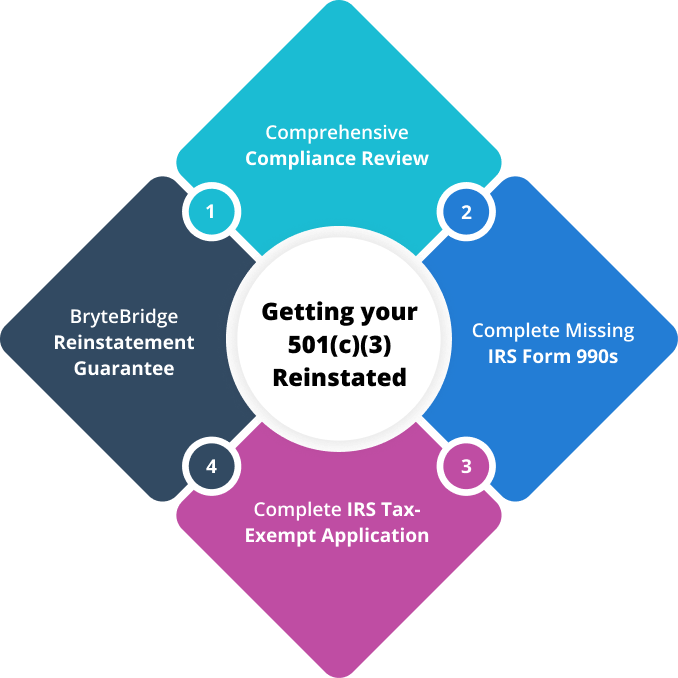
Facing the Automatic Revocation of a 501(C)(3) Status
Has the IRS revoked your tax-exempt status? We know this can be a stressful situation, but do not worry; we can help you through it. At BryteBridge Nonprofit Solutions, we have helped thousands of Nonprofits get 501c3 reinstatement, and over 30,000 receive their 501c3 tax exemption status.
About half a million tax-exempt entities have had their 501c3 statuses revoked based on failure to file their IRS Form 990 for three consecutive years. The procedure on how to reinstate tax-exempt status is different based on the organization’s unique circumstances, including what states they are in.
501(c)(3) Reinstatement Guarantee









